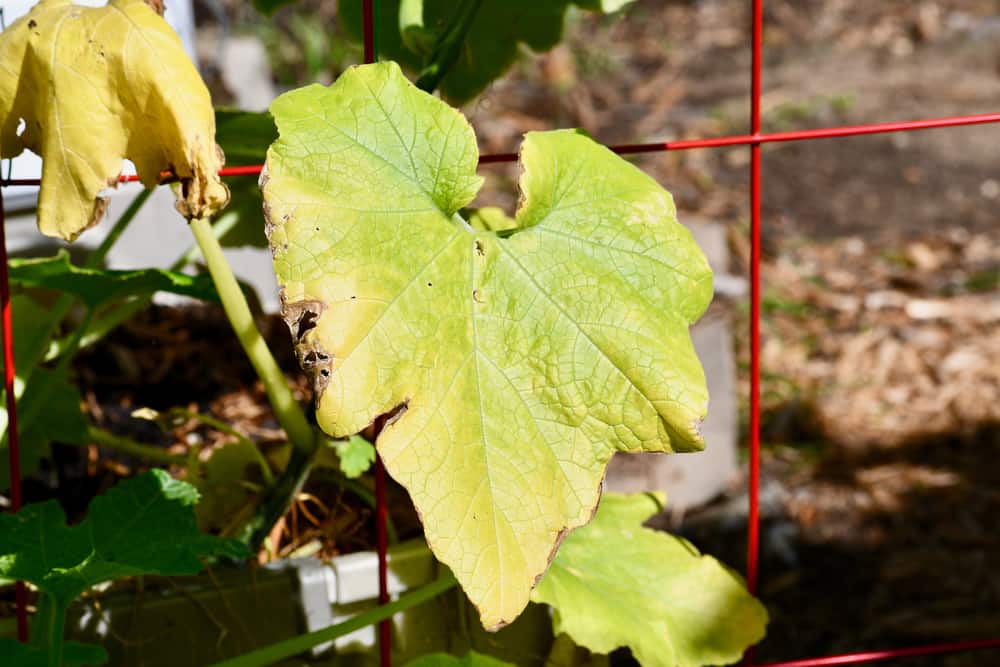

We’re here to help! Wild Yards is a completely free website that is 100% dedicated to helping you create a wildlife-friendly, sustainable yard. Read more
WildYards is reader-supported. When you buy a product through a link on our site, we may earn a comission. Every product is independently selected by our (obsessive) editors and our reviews are unbiased and objective. Read more about our mission or our privacy policy.
Cucumber plants are super-easy to grow and offer you a delicious crop of juicy vegetables – providing you look after them properly! Sadly, these crops are at risk of stress and disease – but why are your cucumber leaves turning yellow?
Yellowing cucumber leaves are typically signs that your plants are suffering from invasive pests, that they’ve contracted a disease, or that the soil isn’t nutritious enough. Thankfully, there are ways to bring your cucumbers back to full health.
Do I need to worry about cucumber leaves turning yellow?
Generally, yellowing leaves aren’t anything to worry about – but they are indicators that your cucumber plant needs a little extra help. This process is known as ‘chlorosis’, meaning your plants suffer from a lack of chlorophyll. Like other plants in your garden or vegetable crop, your cucumbers need to make this food through photosynthesis.
If your cucumber’s leaves are yellowing, it means it’s not able to photosynthesize properly. If you spot yellow leaves on your plants, it’s good to take action as quickly as possible – and most of the time, it’ll be a case of changing up your care routine. Starting your cucumber plants off in a layered garden bed may give them the best start in life – as a ‘garden lasagna’ is typically built to provide nutrition from many different organic sources.
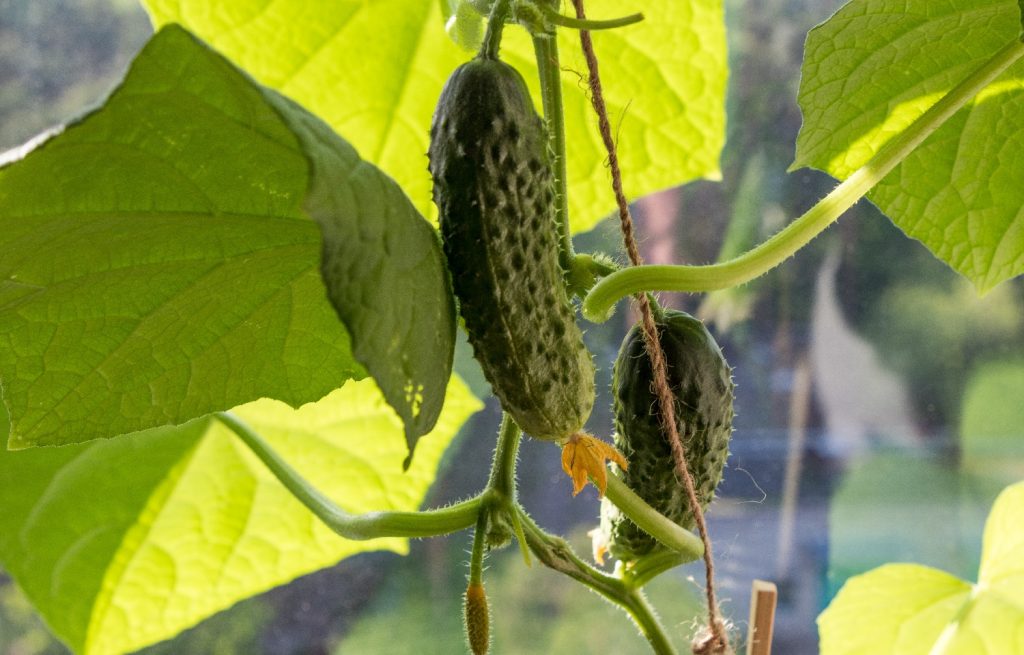
What’s making my cucumber leaves turn yellow?
Yellow leaves on cucumbers are a cry for help – and here’s how you can bring them back to a gorgeous green once more.
You’re overwatering your cucumbers
While cucumbers are especially juicy crops, you can easily overwater them – and yellow leaves indicate they need to dry out a little. Generally, around an inch or two of water a week is all they need to thrive, and you can account for rainwater in this equation.
To check whether or not your cucumbers are getting watered enough, press your finger into its soil and check if it’s dry up to an inch. If this is the case and your leaves are already turning a bright yellow, it’s time to up your watering schedule.
A good way to bring cucumbers back to good hydrated health may be to loosen up the soil or to try growing them in a raised bed with plenty of clear drainage. Since under-watering can cause wilting in cucumber plants, it’s a good idea to balance how their water drains – they won’t abide waterlogged or soggy soil.
The science behind overwatering cucumbers is simple – soggy roots have access to less oxygen, which stunts plant growth.
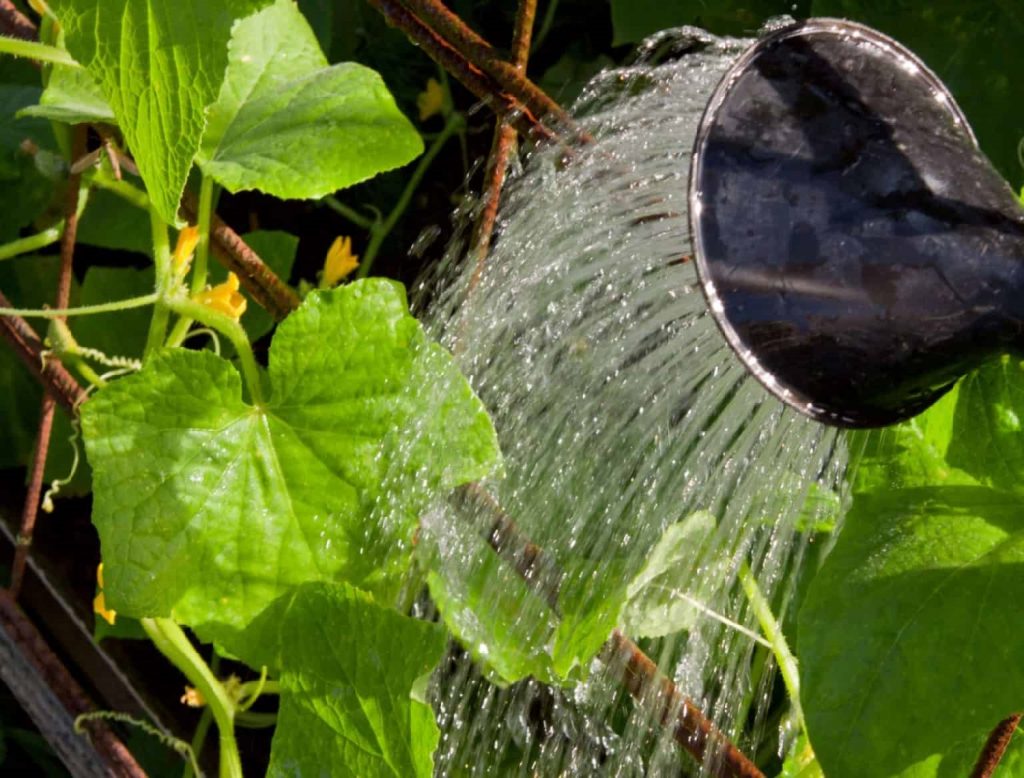
Your cucumbers have pests
Cucumber plants are relatively vulnerable to common garden pest attacks, with whiteflies and aphids likely to take a munch out of cucumbers and their leaves. These minibeasts like feeding on vegetable sap – which, in turn, can drain cucumbers of their nutrients. Fewer nutrients mean your cukes are likely to start showing leaf discoloration.
Spider mites, too, are common pests you’ll spot among cucumber plants – they tend to frequently appear at the height of summer and will actively eat through your leaves.
Don’t be tempted to reach for insecticide – for all cucumber is fairly open to insect attacks; there are several plants, vegetables, and herbs you can grow with them to ward off unwanted visitors.
Chamomile is a brilliant companion plant for cucumber – the ‘garden’s physician’, this herb will produce scents that confuse common winged pests and thus keep them as far from your cucumbers as possible. A combination of chamomile and cucumbers growing in the same plot will also deter deer from your plot – if you want to ward larger mammals away.
Chives are great companions for cucumber in that they’ll help to fight back against cucumber beetles – which are aptly named in that they can ravage your cukes long before harvest.
Getting rid of pests among your cucumber crop may be as simple as using an organic pesticide or a little neem oil. Spraying cucumber crops with chemical pesticides may do them more harm than good – and can hurt helpful animals in your garden, too.
Start to take action against pests around your cucumbers, and you should begin to see yellow leaves starting to turn green again in a short while.
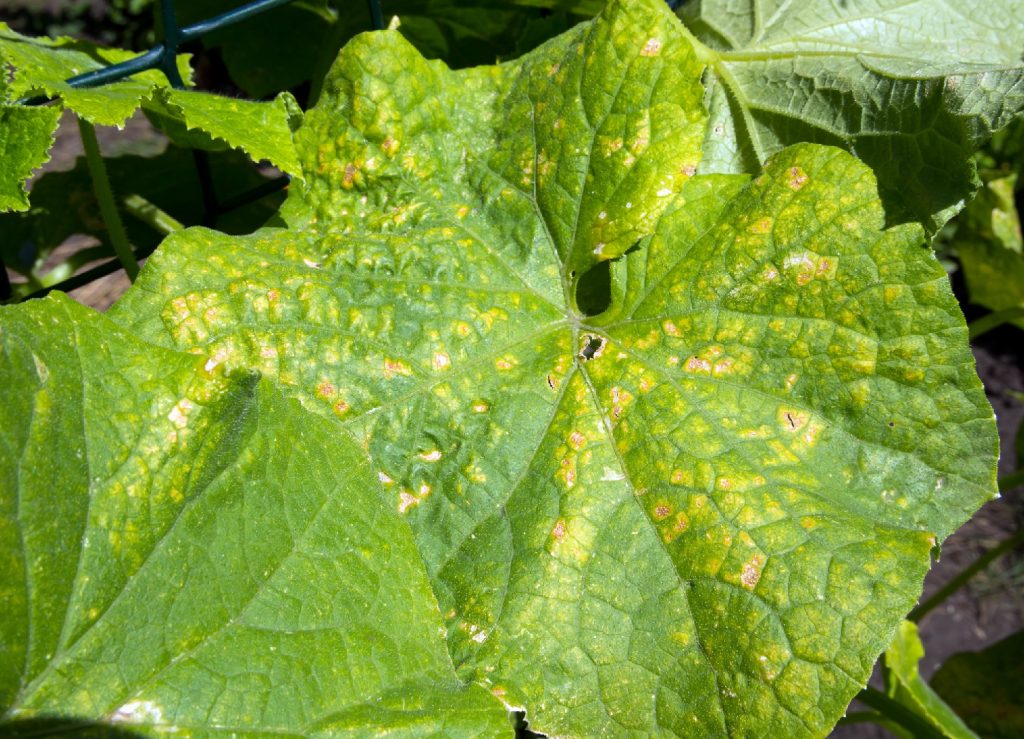
Your cucumbers’ soil lacks nutrients
Cucumbers need nutritious soil to produce a healthy amount of chlorophyll, and yellow leaves may indicate you need to top up your growth medium. Chlorosis can occur when there’s a lack of nitrogen in the soil – and this, in the long run, can also impact how large and strong your plants grow. Boosting nitrogen is as simple as mixing your own compost or adding a little nitrogen-rich fertilizer. Alternatively, try growing beans and peas around your cucumbers – they help to add nitrogen to the soil.
Cucumbers with yellow leaves may also lack potassium – which means you may need to add organic matter to change the pH of your soil. Adding a few orange or lemon rinds around the base of your soil can also help provide your plants with more of this nutrient. If deficient in this element, cucumber leaves are likely to be dull and yellow – and your fruit will narrow at the ends.
A lack of iron, calcium, magnesium, zinc, and/or phosphorus may also contribute to leaf yellowing. The best course of action is to either blend your own compost with a rich variety of organic waste or purchase a balanced plant feed or fertilizer – specifically formulated for crops of this sensitivity. You can purchase magnesium, zinc, and iron supplements in sprays and powders to add to the soil if you wish.
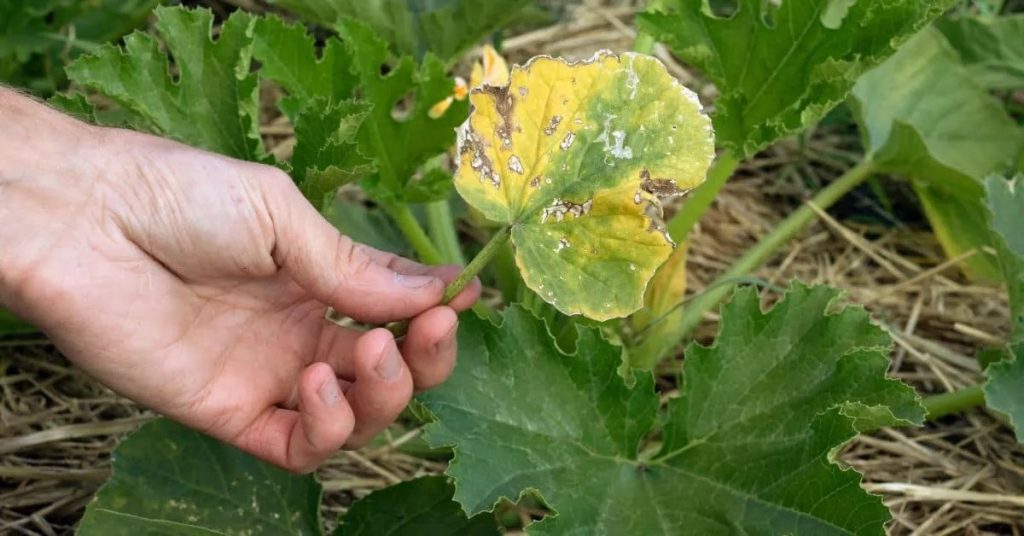
Your cucumbers aren’t getting enough light
Cucumber plants adore sunlight, and you should provide them with at least six to eight hours a day for the largest, healthiest yields. Any more or less may contribute to wilting and/or yellow leaves.
Be sure to avoid growing plants that propagate quickly around your cucumbers. These will likely overshadow your crops and block their direct access to sunlight. If need be, plant your cucumbers in a container that you can easily move around the garden if they are struggling to thrive.
Your cucumbers are suffering from a disease
Cucumbers need special protection from various diseases and infections, with the cucumber mosaic virus, spread through aphid attacks, a common cause of leaf yellowing.
The mosaic virus is quick to take effect, and sadly, it’s extremely difficult to eradicate. It can find its way into the soil and will spread to other plants in the vicinity. The best cure is to completely remove plants and weeds from your soil. If your growth medium is already affected, you’ll likely need to dig out the whole of your bed or container.
You’ll know if you have a mosaic virus if your cucumber leaves start to wrinkle and droop and turn yellow. Be sure to wear gardening gloves, and if not, to wash your hands thoroughly before you handle any other plants.
Fusarium wilt, meanwhile, is another ground-borne fungal disease that commonly turns cucumber leaves yellow and can stunt growth. As with the mosaic virus, the best action to remedy this infection is to dig up any affected plants and cover your cucumbers that have escaped contraction. This type of wilt can kill cucumbers within just three days of infection – so acting fast is a must.
Downy mildew is perhaps more common and is easy to spot from its yellow spots that may congeal on cucumber leaves. This mildew loves wet conditions – and while it may not affect all cucumber species, it’s worth keeping your plants spaced out to allow air to flow clearly among your plot. As with other cucumber diseases, remove any affected plants – but don’t worry about downy mildew thriving in dead debris – it needs an active host.
Protecting your cucumbers against disease may be as simple as planting chamomile – it’s not only adept at warding off insects such as aphids that can spread disease, but it’ll also help to prevent the spread of fungal infections. Beyond this, you should avoid chemical fungicides for the same reasons you’d avoid pesticides. Avoid planting Cucurbitaceae plants such as squash and melon in spots where your cucumbers have struggled with disease – as they commonly fall prey to the same conditions.
Do yellow leaves mean my cucumber plant is dying?
Yellow leaves on a cucumber plant are signs that your vegetable is feeling unwell – and it’s best to check your sunlight and watering schedules before checking for disease or fungus. Cucumbers need a lot of care despite being relatively easy to let grow on their own. Companion planting is highly recommended as a starting point – as you can let your garden or vegetable plot take care of itself.
As soon as you notice cucumber leaves turning yellow, it’s wise to act fast. Some diseases could claim your plants within days – so be sure to look for other signs of damage or deterioration. Avoid chemicals wherever possible – and be ready to repot or reposition your cucumbers if your current setup won’t stop yellow leaves from coming back.

My lower cucumber leaves are turning white. There is no powdering mildew. I’m noticing the same starting to happen with some bush beans. Can’t see any pests or disease, only color change. Any ideas?